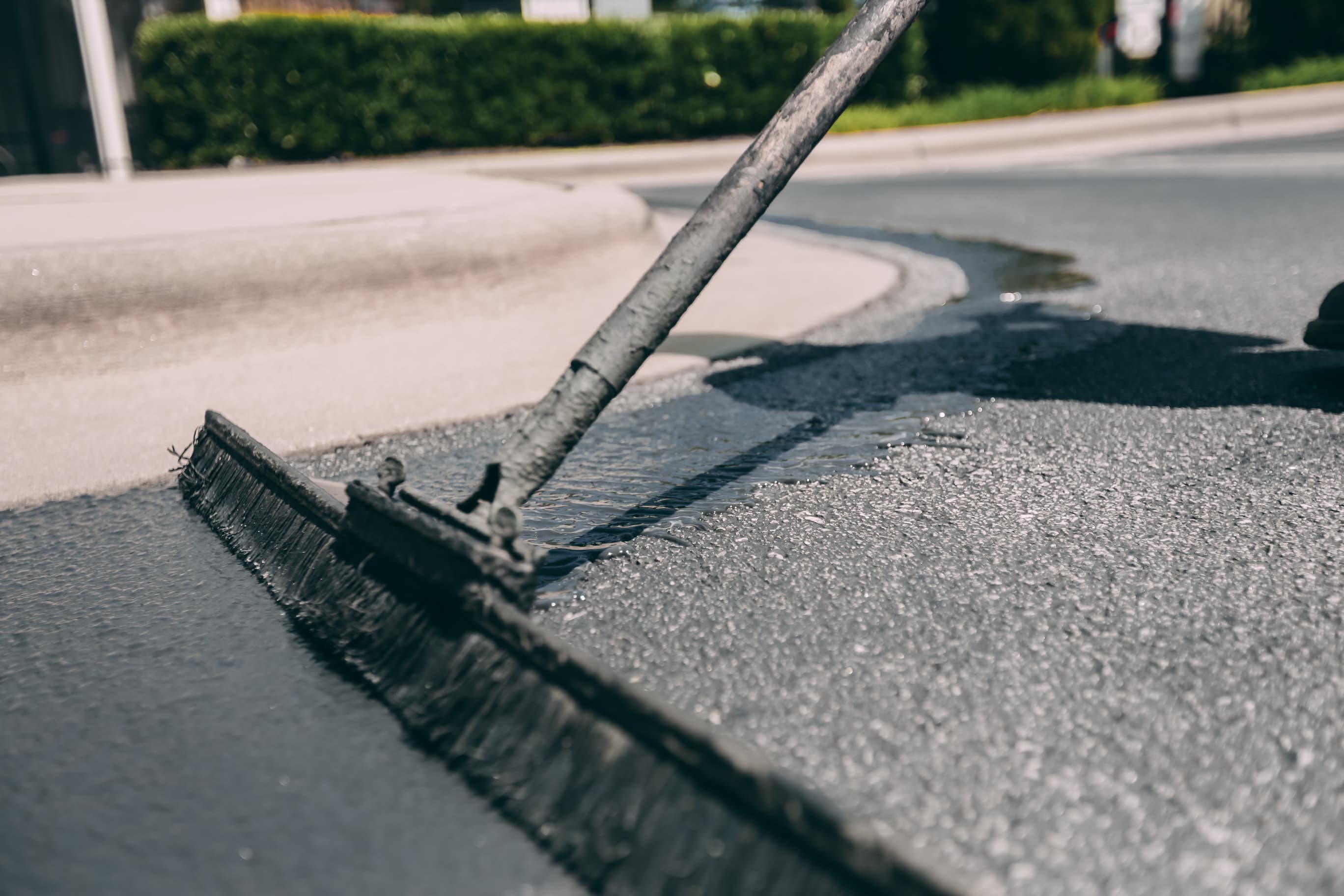Durable Outcomes: Asphalt Patch Repair With Precision Sealing
Durable Outcomes: Asphalt Patch Repair With Precision Sealing
Blog Article
Cold Mix Asphalt Vs. Hot Mix Asphalt: Which Is Right for You?

Make-up Distinctions
Cold mix and warm mix asphalts differ considerably in their composition, with distinctive features that impact their performance and applications. Cold mix asphalt is produced by emulsifying the asphalt binder with water and an emulsifying agent before mixing it with aggregate. This approach permits the asphalt to be practical at lower temperatures, making it ideal for short-term fixings and for usage in chillier climate condition. Warm mix asphalt, on the other hand, is produced at heats, normally in between 300-350 ° F, which assists to attain much better compaction and a much more durable final product. The warm mix asphalt production procedure entails heating the accumulation and asphalt binder independently prior to integrating them at the asphalt plant.
Moreover, cool mix asphalt often tends to be much less thick and much more versatile than warm mix asphalt. This adaptability makes it better matched for areas with greater degrees of activity, such as driveways or roadways with rush hour. In comparison, hot mix asphalt is recognized for its high longevity and resistance to rutting and cracking, making it a recommended selection for freeways and high-traffic roads where longevity is essential.
Installation Process Differences
The process of installing cold mix and warm mix asphalt exhibits remarkable differences in their demands and procedures. Cold mix asphalt, being a much more adaptable material, can be used straight from the bag or container onto the fracture or harmed location. It requires very little preparation work, such as cleaning the area and compacting the cool mix with hand tools. This makes it a convenient alternative for momentary and quick repairs. On the other hand, hot mix asphalt demands a more fancy setup procedure. It includes warming the mix to high temperature levels before laying it down on a properly ready base. The preparation consists of compacting the base, applying a tack coat, and utilizing heavy machinery like pavers and compactors for a smooth and durable finish. Due to the home heating demands, hot mix asphalt setups are normally lugged out by experts with specialized devices, making certain a much more structurally audio and visit this page long-term result.
Durability and Longevity Elements
When thinking about asphalt alternatives, sturdiness and longevity are important elements to examine for enduring sidewalk performance. Warm mix asphalt (HMA) is known for its extraordinary durability and durability.
In terms of durability, HMA normally exceeds CMA because of its exceptional strength and resistance homes. HMA pavements have a longer service life, needing much less frequent repair work and maintenance, which can convert to cost savings in the future. In addition, HMA pavements are a lot more easily customizable to satisfy details job demands, further enhancing their toughness.
Price Considerations
Taking into consideration the financial ramifications is an important facet when reviewing the selection in between hot mix asphalt (HMA) and cool mix asphalt (CMA) for pavement projects. While the first price of hot mix asphalt is typically higher than that of cold mix asphalt, HMA commonly offers an extra Go Here cost-effective service in the long run because of its exceptional resilience and durability. HMA is understood for its capacity to hold up against heavy web traffic lots and harsh climate condition, reducing the requirement for regular fixings and maintenance. On the various other hand, cool mix asphalt is extra budget friendly upfront but might require more constant patching and resurfacing, resulting in higher upkeep prices over time.
In addition to material costs, it's essential to think about the expenditures associated with setup and upkeep when contrasting HMA and CMA. Inevitably, the choice between HMA and CMA must take into account not just the preliminary expense yet likewise the lasting monetary ramifications to determine the most cost-effective option for the particular pavement job.
Environmental Influence Comparison
Comparison of the ecological impacts between hot mix asphalt (HMA) and chilly mix asphalt (CMA) discloses unique differences in sustainability techniques. HMA production requires high temperatures, leading to enhanced energy intake and greenhouse gas emissions.
In addition, using CMA usually involves reusing existing asphalt sidewalk, promoting source conservation and decreasing the amount of waste sent out to landfills. This recycling element even more improves the sustainability of CMA contrasted to HMA. Generally, when thinking about the ecological impact, CMA becomes a more ecologically sustainable choice due to its reduced energy requirements, minimized exhausts, and the possibility for recycling existing products. By selecting CMA over HMA, roadway building and construction projects can contribute positively to environmental conservation efforts.
Final Thought
In final thought, the choice in between chilly mix asphalt (CMA) and warm mix asphalt (HMA) relies on different aspects such as structure, installation procedure, durability, long life, expense, and environmental effect. angle parking. While CMA uses a fast and affordable solution for minor repair services, HMA guarantees remarkable resilience and longevity for hefty traffic areas. Think about these factors very carefully to figure out which type of asphalt is the best selection for her latest blog your paving requires

Considering the monetary implications is an important aspect when evaluating the choice in between warm mix asphalt (HMA) and cold mix asphalt (CMA) for pavement jobs. While the preliminary price of warm mix asphalt is usually higher than that of chilly mix asphalt, HMA often offers an extra cost-effective remedy in the long run due to its exceptional toughness and longevity. asphalt patch repair.Contrast of the environmental effects between hot mix asphalt (HMA) and chilly mix asphalt (CMA) exposes distinct distinctions in sustainability techniques.In conclusion, the option between chilly mix asphalt (CMA) and hot mix asphalt (HMA) depends on various variables such as composition, installation procedure, longevity, longevity, price, and environmental impact
Report this page